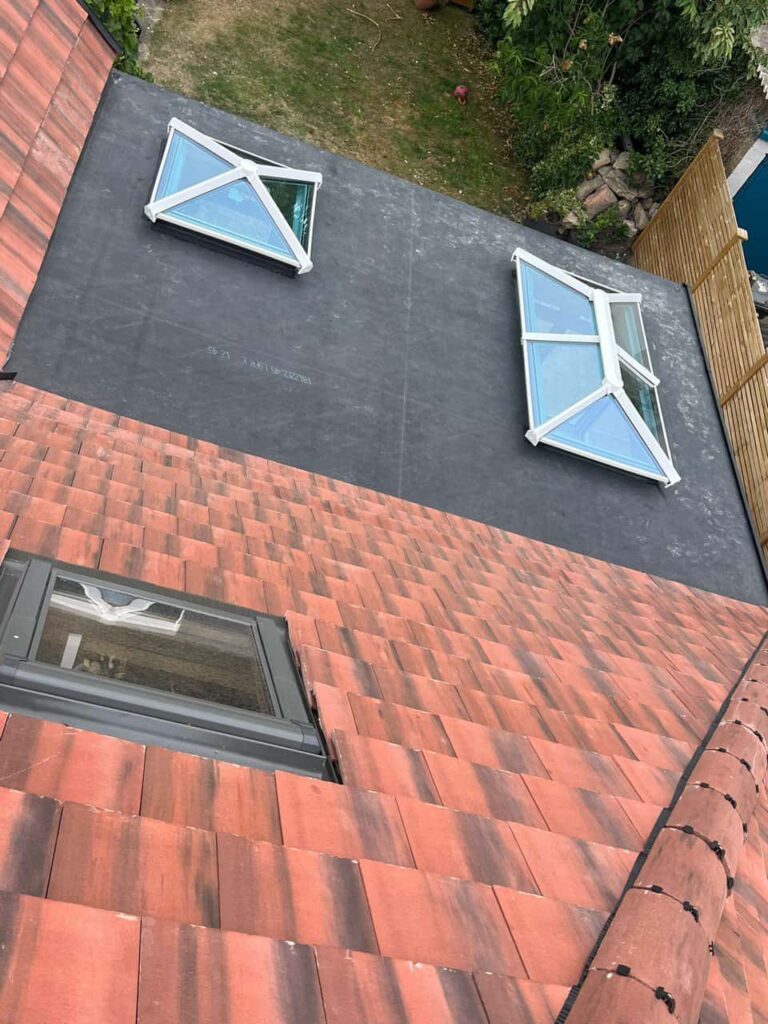Introduction: Lead flashing is a critical component of your roofing system, safeguarding your home against water intrusion in vulnerable areas such as roof joints, chimneys, and valleys. While lead flashing is known for its durability, it’s essential to understand that regular preventative maintenance is key to ensuring its longevity and reliability. In this blog post, presented by West Bridgford Roofing Repairs, we’ll discuss the importance of preventive care for lead flashing and give you essential tips to keep it in top condition.
Why is Preventative Maintenance Important?
- Preserve Structural Integrity: Preventative maintenance helps prevent small issues from escalating into more significant problems. By addressing minor concerns promptly, you can preserve the structural integrity of your flashing and prevent water damage to your home’s interior.
- Extends Lifespan: Regular maintenance can significantly extend the lifespan of your lead flashing, reducing the need for costly replacements.
- Minimises Repair Costs: You can save money on potential repairs by identifying and addressing issues early. Preventative maintenance is a cost-effective way to avoid more extensive and expensive damage.
- Ensures Proper Function: Well-maintained lead flashing is an effective barrier against water infiltration. This helps maintain the integrity of your roofing system and prevents leaks.
Preventative Maintenance Tips for Lead Flashing
- Visual Inspections: Perform regular visual inspections of your lead flashing. Look for signs of damage, including cracks, holes, or loose sections. Inspect vulnerable areas like roof joints, chimneys, valleys, and dormer windows.
- Clean Debris: Remove leaves, debris, and any objects that may have accumulated on or around the flashing. Debris can trap moisture and accelerate corrosion.
- Re-Seal Joints: Check the sealant or caulk around the flashing. If you notice any gaps, cracks, or signs of deterioration, reseal the affected areas to maintain a watertight seal.
- Check Flashing Attachment: Ensure the flashing is securely attached to the roof and structures like chimneys. Loose or detached flashing can compromise its effectiveness.
- Monitor Roof Movement: Be mindful of any movement or settling of your roof. Adjustments may be needed to accommodate these changes and prevent stress on the flashing.
- Rust Prevention: Look for any signs of rust or corrosion on the lead flashing. Clean surface corrosion and consider applying a protective coating to prevent further deterioration if you notice surface corrosion.
- Professional Inspections: While regular visual inspections are essential, it’s advisable to schedule professional roofing inspections periodically. Experienced roofers can identify issues that may not be immediately visible and provide expert recommendations for maintenance and repairs.
- Address Leaks Promptly: If you notice water leaks inside your home, trace the source back to the flashing area and address it promptly. Leaks can worsen over time and lead to more extensive damage.
Conclusion: Preventative maintenance for lead flashing is a proactive way to protect your home from water damage and extend the lifespan of this critical roofing component. By following these maintenance tips and being vigilant about the condition of your flashing, you can ensure that it continues to perform its essential role in keeping your home dry and secure. If you ever have concerns about the condition of your lead flashing or need assistance with repairs or maintenance, don’t hesitate to contact professionals like West Bridgford Roofing Repairs for expert guidance and service.
Call us on: 0115 647 1193
Click here to find out more about West Bridgford Roofing Repairs
Click here to complete our contact form and see how we can help with your roofing needs.

